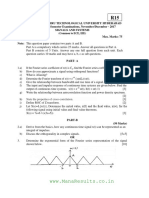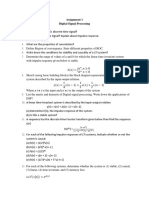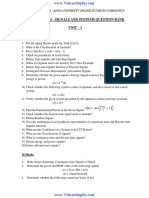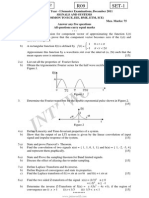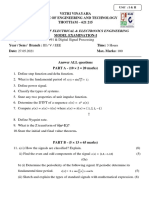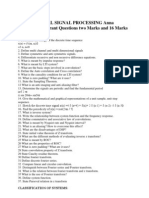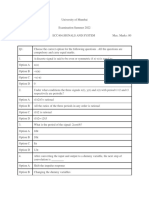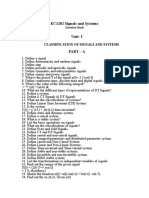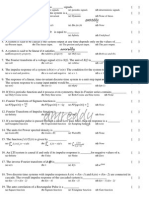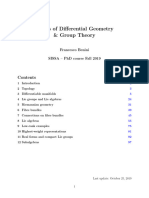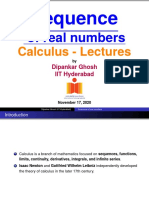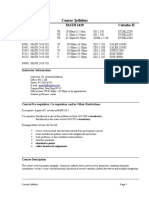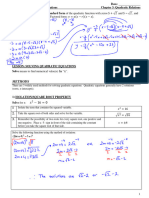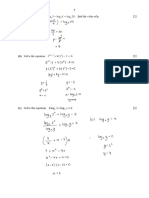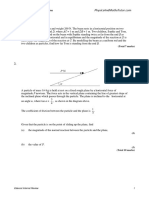0% found this document useful (0 votes)
8 views5 pagesSignal & System Model Question Paper
The document is a model question paper for B.Sc. Electronics Honours, focusing on the core course of Signal & System. It includes a variety of short questions and problems related to concepts such as causal systems, Fourier transforms, energy and power signals, and linear time-invariant systems. Additionally, it covers sketching signals, determining periodicity, and analyzing system responses through various equations and theorems.
Uploaded by
modoxmotivationCopyright
© © All Rights Reserved
We take content rights seriously. If you suspect this is your content, claim it here.
Available Formats
Download as PDF, TXT or read online on Scribd
0% found this document useful (0 votes)
8 views5 pagesSignal & System Model Question Paper
The document is a model question paper for B.Sc. Electronics Honours, focusing on the core course of Signal & System. It includes a variety of short questions and problems related to concepts such as causal systems, Fourier transforms, energy and power signals, and linear time-invariant systems. Additionally, it covers sketching signals, determining periodicity, and analyzing system responses through various equations and theorems.
Uploaded by
modoxmotivationCopyright
© © All Rights Reserved
We take content rights seriously. If you suspect this is your content, claim it here.
Available Formats
Download as PDF, TXT or read online on Scribd
/ 5







